#world number one nutrition company
Explore tagged Tumblr posts
Text

What makes BOLT Nutrition the G.O.A.T of Protein?
BOLT Nutrition uses key ingredients such as PHYCOCYANIN to ensure you get those extra benefits that other sports nutrition won't give you.
BOLT Nutrition is a top-rated protein supplement which is registered in the USA satisfying over a 1000 customers globally.
BOLT Nutrition has your health, performance, and recovery as tops priorities.
#the goat of protein#goat of protein#goat protein#best goat protein powder#goat protein powder#protein powder#protein supplements#nutritional supplements#goatein#goatein powder#goat protein supplements#buy protein supplements#buy Nutritional supplements#world no 1 nutrition brand#world no 1 nutrition company in india#world no 1 nutrition company#world number 1 nutrition company#world number one nutrition company
0 notes
Note
sorry if you've answered this before, and i hope you don't mind me asking, how do you know so much about computers and what seems to me like everything in the world? how did you become so knowledgeable? it's amazing
i just know a little about a lot of things and I probably have a fair number of things that I've dug into more than most people and less than people who actually focus on that stuff! It's kind of an illusion!
I do know a lot about computers and that's because I've worked at a computer company for 12 years and have been deep into a computery subculture for about 20 years - I do genuinely know a lot about consumer computers. That I'll own and that's experience.
I know a fair amount about literature because I've got a degree in it!
I know a fair amount about journalism because I've got most of a degree in it and I worked with journalists for a long time!
I know a fair amount about nutrition because I've got most of a degree in it and because I've been focused on reading a lot about nutrition for more than a decade because of my own food issues!
But mostly I'm just someone who falls down rabbitholes and has a decent ability to recall what I find when I run down them.
Also I get curious about things and will just go. Experience them.
Like at some point i came across a site for people who own and use RealDolls and I got interested in learning more. The site required an application because they didn't want people just trolling so I applied and I ended up reading through the whole site and reading the magazines they sent out for years after because it was just interesting. The way these guys bought clothes or compared repair techniques and cleaning techniques, the way they constructed identities for their dolls - it was all interesting! So now I know about the proper way to store a RealDoll and how their skeletons are put together and the best way to prevent rips or clean inserts.
Now imagine that with everything.
I got interested in quack medicine so I ended up reading the entire back catalogs of quackwatch and science-based medicine.
I got interested in the history of aspartame as a scare-word and I ended up reading a couple of books, SEVERAL entire blogs with decades-long runs, purchasing a military magazine from the 90s, and submitting a FOIA request.
But, like. I don't own a RealDoll or work in that industry. I am not a medical professional. I am not a chemist who works with aspartame. So I get these weird little collections of information where I know what *seems* like a lot to someone who hasn't looked into it but I know a lot less than someone who has taken the time to actually dedicate themselves to that topic.
And sometimes it's a years-long dive and sometimes it's a months-long dive and sometimes it's a few hours of me digging online until I feel satisfied with what I've learned and I never come back to it, but I've got three more talking points than your average joe at a party would.
(Also though I've attended various colleges at various levels for ten-ish years now and I've taken probably more college-level classes on a lot of subjects than most people have because I've now spent several years just kind of kicking around at community colleges and deciding that a cartooning class sounds fun or that a mesoamerican art class fills certain transfer requirements or that I might as well brush up on spanish, french, and german. Access to low-cost college classes in california is a big part of this, and having the time and money to take classes while i'm working is something that I've been very lucky with)
I've also worked pretty much continuously since I was 18, sometimes holding multiple jobs at once, and I know a lot of interesting people who do a lot of interesting things and I ask them about their interesting experiences and if they offer me a chance to go do cool shit with them, like launch a high altitude balloon or blow up some dynamite that's about to expire or join a band, I do it!
I was also one of those kids who had no friends and spent too much time at the library so I'd do things like read through medical textbooks or pull a book of home chemical formulas out of the trash and read it or take it into my head that I was going to read all of Shakespeare before I got to high school so I was a really annoying twelve-year-old and that kind of thing never really let up.
I don't know! I don't think it's that unusual and I think most people do this kind of thing I just happen to have less focus than a lot of people and talk a lot more.
273 notes
·
View notes
Text
one thing that I have found shocking about the world of enteral nutrition (tube feeding) is that a lot of it is very patient-led. What I mean by this is that a lot of the ways we have learned about bettering tube feeding is via people who rely on it to survive. It is the textbook example of disabled people becoming the experts on our own condition.
While this isn't unique to specific chronic illness/disability communities, I think it is relatively unique in that it's a form of life support where a lot of the literature and techniques for long-term care are created by people with tubes and caregivers
I live in a top 5 city in the US and use multiple major hospital networks for my tube care/gastric care. I have barely learned anything about tube feeding beyond how to administer my feeds, and that I learned from a dietician from my medical supply company, not anyone on my medical team.
The majority of my information about my own care has come from support groups of fellow tubies and caregivers, as well as non-profits like The Oley Foundation, which was created by people on enteral and parenteral nutrition.
There is a huge knowledge gap in the medical community about tube feeding, especially with adult care. I've had multiple medical professionals mislabel my gastro/jejunal tube as a gastric tube- a mistake that can result in significant damage for me with my paralyzed stomach. This is also true with parenteral nutrition- there are cases of people on TPN dying because their TPN was administered in the wrong place, or the care team mixing up TPN and enteral formula and giving them formula intravenously. I don't know if this is true for any other kind of life support- despite there being 400,000 people in the US on home enteral nutrition and 25,000 people on home parenteral nutrition. Those numbers are not insignificant, especially in a populous city.
602 notes
·
View notes
Text
Hey. I don't know who needs to hear this. But apparently we needed to remind ourselves of this when discussing symptoms with our psychiatrist today. The context for this post is largely mental health, with the understanding that psychological conditions can cause physical symptoms.
Disclaimer: I will not invalidate informed self-diagnosis, because the psych system is... We know. And I only live in my head, no one else's. It's really not my place to tell you what you're experiencing, even if you asked me to. That's the thing about perspective.
Anyway, the thing.
You don't have to have an official diagnosis for something to find value in whatever coping skills are commonly helpful for specific psychological disorders.
You don't have to have something 'bad enough' to be diagnosed with whatever thing because you have symptoms. Trust me, you'll get more out of alleviating what you struggle with if you don't keep trying to pathologize yourself. These coping skills are things that we, for one reason or another, didn't get to learn while we were still very young children. It's not wrong to want to give a name to your experiences. But at the same time, the problem comes from the unhealthy fixation on something being 'wrong' to warrant needing to learn these skills later in life.
Trying to constantly find out 'what it is' will keep you trapped in a neverending cycle and you won't learn those skills you need.
Easier said than done, I get it. Trust me, I'm still pulling myself out of that cycle. Ideally, you probably should have someone you can actually trust to keep bringing you back to what's really important for you. At some point, psychoanalysis can become nothing more than a snake eating its own tail.
The sooner you get that snake to stop trying to swallow itself (obsessing over labels to feel valid), the sooner you can give it some actual nutrition (solid, healthy coping skills).
Your experiences are valid and important to how you interact with the world. It makes no sense to claim otherwise. It's hard, but don't let others shame you out of getting help just because you don't have the right diagnosis. That shaming is the exact reason mental health is so stigmatized to begin with. That's why we have an epidemic of people trying to diagnose themselves with everything so we can think we deserve what we simply need. It's very literally a cry for help, and we're getting more desperate because we keep getting written off as being hysterical and a bunch of hypochondriacs.
Psychiatry as a field in general is difficult for patients to navigate. No one really teaches you how to effectively communicate with your care providers, doctors and nurses and such. It's built on ages of ableism and sanism by an uncountable number of bigots. Made all the more difficult by insurance companies, which have no business in saying what services a person should be eligible for or not.
Good luck to everyone trying to navigate the symptoms.
-Maxie 🥩😺
#dissociative identity disorder#did#dissociation#derealization#depersonalization#delusions#paranoia#anxiety#ptsd#complex ptsd#depression#did osdd#ocd#obsessive compulsive behavior#tics and tourettes#adhd#attention deficit disorder (add)#autism#autism spectrum disorder#psychosis#personality disorder#coping skills#psychiatric care#therapy#psychoanalysis#symptoms#symptom management#mental health#neurodiversity#recovery
18 notes
·
View notes
Text

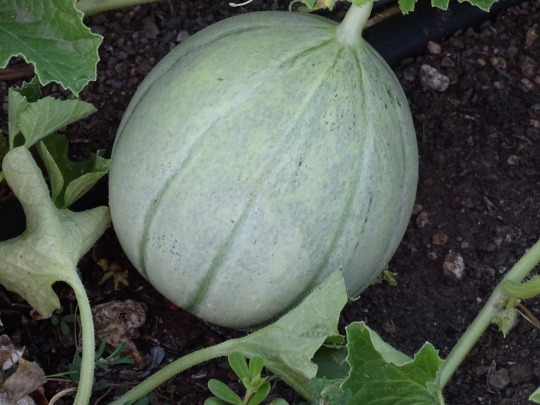



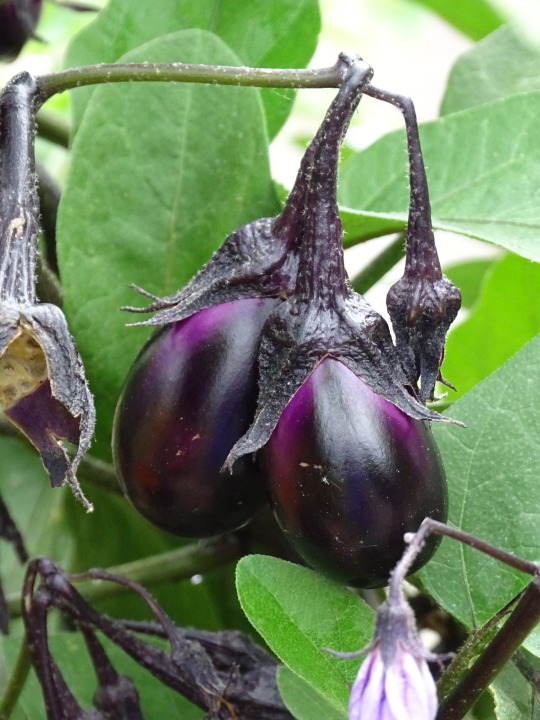
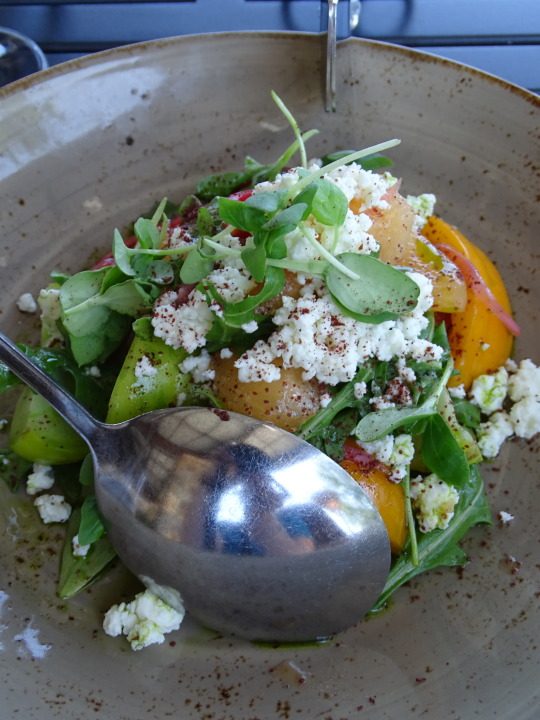
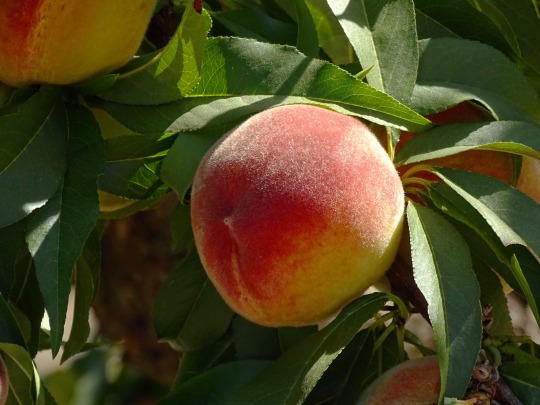
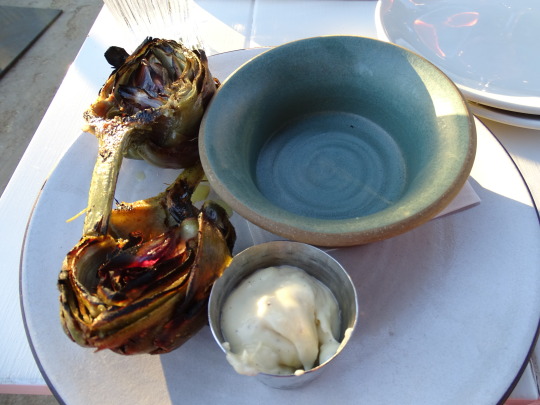



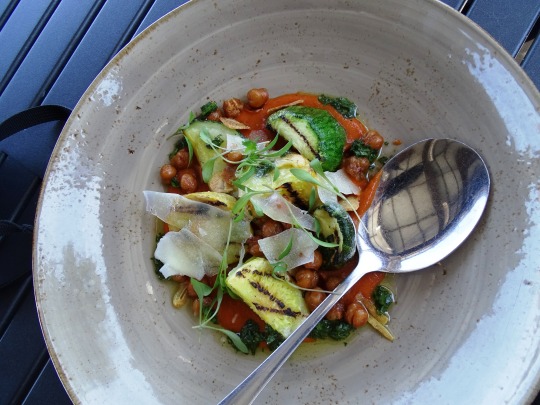

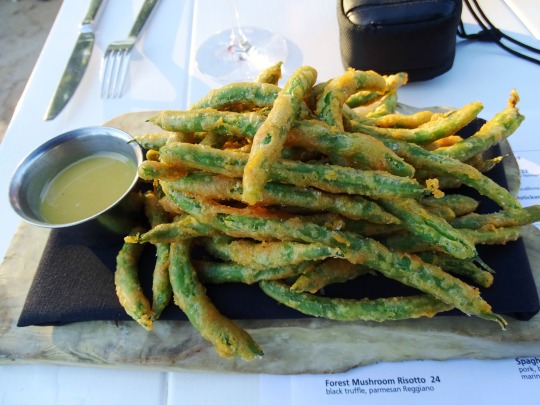




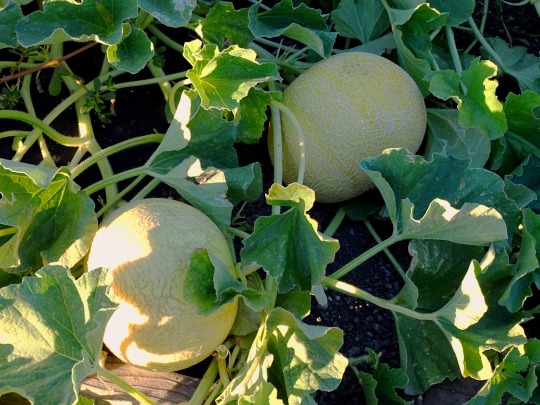

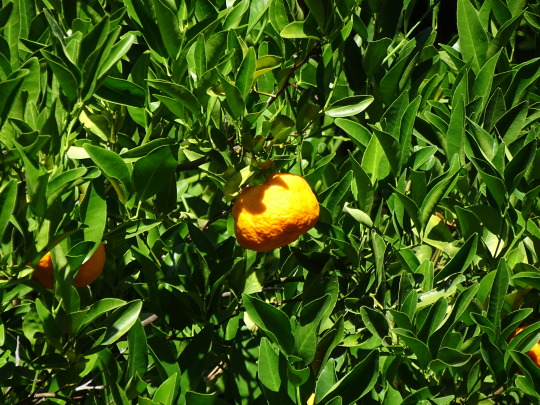
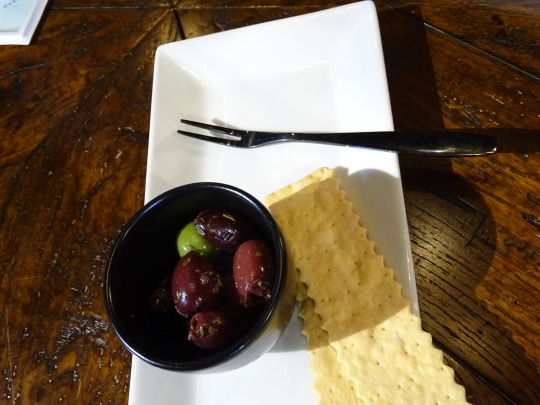

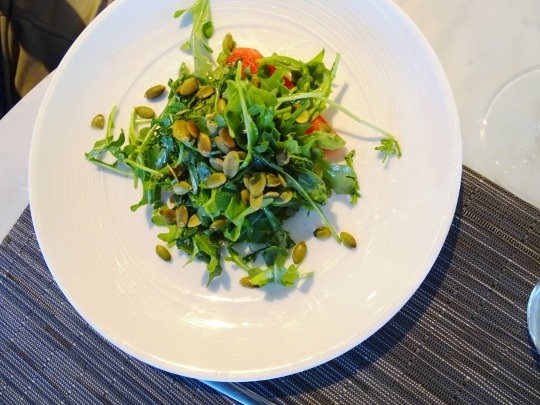


Eat More Fruits and Vegetables Day
Eat More Fruits and Vegetables Day is celebrated on May 21. This is the perfect time for the availability of all our favorite fresh fruits and vegetables. We believe including fresh fruits and veggies in the diet is necessary for a healthy life. Eat More Fruits and Vegetables Day is dedicated to a cause. The increase in obesity and lifestyle diseases among American people is a major concern nowadays. This is a day to remind us of the importance of fresh food, which helps us lead a healthy life.
History of Eat More Fruits and Vegetables Day
Ever wondered who started the cultivation and farming of vegetables and fruits? We only have a vague idea about the start of cultivation. We know we used to forage for nuts and fruits as far back as 1,00,000 years ago. During that time, our ancestors observed that the seeds they threw away created new plants.
The understanding that we could manipulate plant growth was perhaps one of the greatest discoveries of the ancient world. Most scientists agree that proper cultivation started only around 30,000 years ago. Initially, farming was a concept associated with grains and cereals. However, the practice soon expanded to include fruits and vegetables as well. Fruits and vegetables are good sources of necessary vitamins and minerals.
There are records of Romans using greenhouses to cultivate vegetables and fruits. The vegetables and fruits available nowadays are different from their ancient counterparts. Selective breeding for nutrition and edible quantity changed the shape, color, and even the taste for the better. But today, the trend has changed as we all opt for fast food.
This decision contributes to the obesity crisis and the formation of deadly lifestyle diseases. The growing number of people affected by unhealthy eating caused the Dole Food Company to take action. They created this holiday to educate the world about healthy eating and spread awareness about conditions such as obesity.
Eat More Fruits and Vegetables Day timeline
8000 B.C. — 9000 B.C. The First Evidence of Cultivation
People from the Fertile Crescent region in the Middle East start cultivating the land.
5000 B.C. Bartering for Better
The bartering trade system in China is improved with the addition of fruit and vegetables to the trade list.
30 A.D. Romans Introduce Greenhouses
The Roman Emperor, Tiberius, farms fruits and vegetables using greenhouses.
2015 Eat More Fruits and Vegetables Day
The Dole Food Company kicks off Eat More Fruits and Vegetables Day.
Eat More Fruits and Vegetables Day FAQs
What happens when you eat more fruits and vegetables?
A diet rich in fruits and vegetables can supplement essential vitamins, minerals, and dietary fibers. It can help reduce health conditions like diabetes, obesity, heart attack, and stroke. It can also help reduce blood pressure, cholesterol levels, and digestive issues and even prevent some forms of cancer.
How much fruit and veg a day is too much?
It depends on each person, their health conditions, and body weight. But generally speaking, around 14 ounces per day is good.
Is a fruit and vegetable diet costly?
Fresh fruits and vegetables are costlier compared to regular crops. High prices are due to the necessity of manual labor and the need for customized equipment for cultivation. But the reduction in healthcare justifies the higher prices.
Eat More Fruits and Vegetables Day Activities
Source your fresh fruits and veggies
Explore the flavors of vegetable recipes
Invite people for a salad party
This is the easy part. Just pack a bag and start shopping for fresh veggies and fruits. Make sure to buy your veggies from the freshest source. It is best to buy from an organic source. This can help ensure the food is free of harmful chemicals or pesticides.
People often do not realize the choices available for fruit and vegetable recipes. There are countless vegetable dishes and smoothes available to try. Celebrate by exploring the tasty cousins available rather than going for fast food.
Get your friends who share the same enthusiasm for fresh food. You know what to do then! We have already purchased fruits and vegetables, and we know the recipes too. So sheath those knives and start cutting some veggies for the party.
5 Facts About Fruits And Vegetables That Will Interest You
Fruits and vegetables can increase your lifespan
The bounty of vitamins and minerals
The top consumer and producer
Versatile
Fruits are delicious
Consuming fruits and vegetables in place of meat can increase one’s life expectancy by a few years.
A fruit and vegetable diet is a rich source of essential vitamins and minerals.
China leads the world in fruit and vegetable production and consumption.
Fruits and vegetables can be consumed in any form: fresh, canned, dried, frozen, and juice.
Fruits are sweet with fructose, and they do not pause the risk of extra sugar into our bloodstream.
Why We Love Eat More Fruits and Vegetables Day
It can reduce the risk of various diseases
Vegetable and fruit diets are cruelty-free
It can reduce our carbon footprint
This is not a secret, but a non-vegetarian diet can cause numerous health issues. Diabetes, heart attack, stroke, obesity, e.t.c. are all companions of meat consumption. Adding more vegetables and fruits can help reduce these health conditions before they manifest.
There is a long battle raging between vegetarians and non — vegetarians. A vegetarian diet is relatively less cruel as no killing or maiming is involved. A major argument is that plants are also alive, but plants are not sentient like animals and do not feel the same kind of pain. So it is a relatively cruelty–free diet.
Meat production negatively affects our environment. It is a demanding process and needs a lot of water and food. The byproducts can add to the greenhouse gas emission and thus to global warming. The same amount of investment in cultivation can yield better output and reduce carbon emission.
Source
#Chicken Hunan Kung Pao#Truffled Parmesan Chicken#steak#artichokes#apple#pear#watermelon#grape#eggplant#USA#Canada#travel#Brix Restaurant & Gardens#Beringer Vineyards#original photography#eating#tourist attraction#landmark#banana#Eat More Fruits and Vegetables Day#21 May#NationalEatMoreFruitsandVegetablesDay#vacation#St. Francis Winery & Vineyards
2 notes
·
View notes
Note
oooh do the bugs have different religions that function differently like with different mythologies and ceremonies? thatd be so interesting
They do actually! Although, they have a few aspects of bug religion that they all share:
It all started when one featureless mass emerged from a "soup". This creature would be the catalyst for the creation of every bug (which includes slugs, snails, worms, etc.)
This creature doesn't have a specific name, many bug cultures refer to them as different names (Ex: Cambrian, Carboniferous, Ordovician). For simplicity sake, I'll refer to them as just "Bug God"
Bug God drank from the soup because of their body's need for hydration and nutrition, sprouting eyes and sentience in the process
Bug God had wandered the world for a while, it was desolate and lonely for them. But they had noticed that the other creatures had created company of their own through mitosis
So, Bug God began to split themselves up, over and over and over until there were thousands like them: Their children
Life was great for Bug God and their children, they drank from the nutritious soup and wandered the world
But it would be their great number that would put them in danger
When both Bug God's kids and the other creatures would drink from the soup, some of Bug God's kids were accidentally consumed by the other creatures. Giving them a taste for Bug God's kids
Fun fact about that: Some bug cultures will use this part of the story for different religious purposes, whether it be to shame themselves for existing, to blame themselves for why everything wants to kill them, or to push the narrative that death is a worthy consequence to obtain any kind of riches (Latter part is apart of Mosquito religion)
Bug God figured that they could continue to split themselves up to create more kids, but it grew tiring and they weren't able to keep up
As a last moment attempt at survival, Bug God called to their kids to regroup to them, in order to gift what is often called, "Gifts/Magic of Survival"
Some were gifted with wings to take to the skies with
Some were bounded to the ground and lost their eyes, but gained the ability to detect even the smallest vibration and quickly hide
Some were given stingers filled with corrosive poison that would ward of predators
Some were given elongated legs to quickly hop away with
Some were given organic armor to protect themselves
This is just a small fraction of the Gifts/Magic of Survival that Bug God has gifted their children. They gave some of their kids false eyes to scare off predators, some were given extreme senses, etc.
Down the line, Bug God sacrificed their life so that their children would continue to live
Bug God's children moved to different parts of the Earth, creating a new life for bug-kind, new cultures, religions, etc.
It is believed that one day, Bug God's voice in the wind was heard by all of their ancestors. They had quietly hushed to them all:
Hear me, my dearest kin Quite some time, hasn’t it been? Though the world seems so pretty All living things won’t give us some pity With life, it grows and flourishes, rarely a dud But that growth comes from the shedding of our blood But I had gifted you all with magic, you see Magic that allows survival; That, I may guarantee Armor, agility, some can even fly These gifts, my kids, may ensure you won’t die March forth, for your gifts and skills make you prime We shall live now and forever, till the end of time
Of course, there are varying recitings of this story, but generally they all share the same beats.
As I've said before, some cultures will use the part that it was the accidental consumption of Bug God's kids that caused the other creatures to hunt+eat them as a source of shame for bug-kind. That they need to repent somehow
Some versions of the story even claim that through the consumption of Bug God's kids- and not the consumption of the soup- it led to all of the other creatures to kill and eat each other
I should note that the use of "children" "kids" and "kin" in the story doesn't mean what you might think it means. It fits more with the idea of everyone calling each other "My brethren" or "My brothers and sisters"
I hope to be able to cover the different bug religions and cultures soon, I have a lot of ideas for some of them and other ideas that need some brainstorming work. This might all be covered in one big mega-post that details the background of the different bug kingdoms we see in the story.
#blimbo rambles#ask#bug world no mercy#let's just hope that college doesn't kill me and my motivation
4 notes
·
View notes
Photo

Mike Luckovich, Atlanta Journal Constitution
* * * *
LETTERS FROM AN AMERICAN
March 1, 2023
Heather Cox Richardson
Drugmaker Eli Lilly announced today that it will cap the cost of insulin at $35 a month, bringing costs for people with private insurance and those without insurance who sign up for Lilly’s copay assistance program into line with the $35 cap for Medicare recipients Congress imposed with the Inflation Reduction Act last August. Republicans all voted against the Inflation Reduction Act and explicitly stripped from it a measure that would have capped the cost of insulin at $35 for those not on Medicare. They continue to oppose the measure. On February 2, 2023, newly elected House Republican Andy Ogles (TN) introduced his first bill: a call to repeal the Inflation Reduction Act, claiming it “took a gigantic step toward socialized medicine.” The bill had 20 far-right cosponsors. At the time he introduced the bill, Ogles presented himself as an economist with a degree in international relations from Middle Tennessee State University. Since then, an investigation by NewsChannel 5 in Nashville revealed that he took one course in economics and got a “C” in it, and that his resume was similarly exaggerated across the board. Ogles won a seat in Congress after the Republican state legislature redistricted Nashville to make it easier for a Republican to win there. Lilly’s announcement in the face of Republican support for big pharmaceutical companies is a bellwether for the country’s politics. Biden has pressured companies to bring down the price of insulin—most notably by calling for such legislation last month during his State of the Union address—and is claiming credit for Lilly’s decision. But there is more to it. The astronomically high price tags on U.S. insulin compared to the rest of the world have become a symbol of a society where profits trump lives, and there is growing opposition to the control pharmaceutical companies have over life-saving drugs. A number of other entities, including a nonprofit company in Utah called Civica Rx, the state of California, and a company run by billionaire Mark Cuban, have all promised to produce generic insulin at a fraction of what pharmaceutical companies are currently charging. Lilly's announcement is likely a reaction to the changing moment that has brought both political pressure and economic competition. The company’s leaders see the writing on the wall. The administration continues to work to create positive change in other measures important to ordinary Americans. This month ends temporary increases in the Supplemental Nutrition Assistance Program, or SNAP, previously referred to as “food stamps.” At the start of the coronavirus pandemic, Congress boosted SNAP payments, keeping as many as 4.2 million people out of poverty. Congress ended those extra benefits late last year through the Consolidated Appropriations Act that funded the government. About 42 million Americans receive SNAP benefits, and the end of that boost will cut those benefits by $90 a month on average. Secretary of Agriculture Tom Vilsack wrote an op-ed at CNN today, promising that the U.S. Department of Agriculture, which administers SNAP, will do its best to protect families losing the expanded benefits. It will work to adjust benefits to rising prices, expand school lunch programs, and promote access to the Women, Infants, and Children (WIC) program. “Our country was founded to support the prosperity and potential of Americans in every corner of the nation,” Vilsack wrote. “Under President Joe Biden’s administration, we’re making good on this promise.” Yesterday the Senate Judiciary Committee held a hearing about the ratification of the Equal Rights Amendment prohibiting discrimination on the basis of sex. Congress passed the amendment in 1972 and sent it off to the states for ratification, but they imposed on that ratification a seven-year deadline. Thirty states ratified it within the next year, but a fierce opposition campaign led by right-wing activist Phyllis Schlafly eroded support among Republicans, and although Congress extended the deadline by three years, only 35 states had signed on by 1977. And, confusing matters, legislatures in five states—Idaho, Kentucky, Nebraska, South Dakota, and Tennessee—voted to take back their earlier ratification. In 2017, Nevada became the first state to ratify the ERA since 1977. Then Illinois stepped up, and finally, in 2020, Virginia became the 38th state to ratify the amendment, putting it over the required three quarters of states needed for the amendment to become part of the Constitution. But now there are legal challenges to that ratification over both the original deadline and whether the states’ rescinding of previous ratifications has merit. The Senate hearing was designed to examine whether the deadline could be separated from the amendment to allow the amendment to be added to the Constitution, but it was far more revealing than that. Faced with the possibility that the ERA might become part of the Constitution, right-wing leaders insisted that the ERA has “just one purpose left,” as the Heritage Foundation put it: “Abortion.” They claim that since, in their view, women are now effectively equal to men across the board in employment and so on, women’s current demand for equality before the law is simply a way for them to capture abortion rights. Catholic bishops of the United States have written to senators to express “alarm” at the ERA, warning it would have “far-reaching consequences” with “negative impacts to the common good and to religious freedom.” They claim it would require federal funding for abortions and would prohibit “discrimination based on ‘sexual orientation,’ ‘gender identity,’ and other categories.” “We strongly urge you to oppose it,” they wrote, “and any resolution attempting to declare it ratified.” This fight highlights that the attempt to stop government protection of individuals is really about imposing the will of a minority. A piece by Megan O’Matz in ProPublica today explored how an anti-abortion law firm has been sowing doubts about the 2020 presidential election as part of a long-term strategy to end abortion rights. Led by former Kansas attorney general Phill Kline, whose law license was suspended a decade ago for ethics violations, lawyers at the Thomas More Society worked to restrict access to the vote and to stall President Joe Biden’s inauguration in order to keep Trump in office. Their efforts thrived on disinformation, of course, and the echoes from the testimony released recently in the defamation case of Dominion Voting Systems against the Fox Corporation continue to reverberate in the fight against public lies. In that testimony, both Fox News Channel hosts and top executives admitted that they knew Trump’s claims of victory in the 2020 presidential election were lies but spread them anyway to keep their viewers from abandoning them for another channel. Now House Speaker Kevin McCarthy (R-CA) has given exclusive access to 44,000 hours of video from the U.S. Capitol on January 6, 2021, to one of those hosts, Tucker Carlson. Today, Senate majority leader Chuck Schumer (D-NY) and House minority leader Hakeem Jeffries (D-NY) did an end run around McCarthy to address the problem of disinformation directly at the source. They sent a letter to Rupert Murdoch, chair of the Fox Corporation, and other top Fox executives, reminding them of their damning testimony and reminding them that “your network hosts continue to promote, spew, and perpetuate election conspiracy theories to this day.” They wrote: “We demand that you direct Tucker Carlson and other hosts on your network to stop spreading false election narratives and admit on the air that they were wrong to engage in such negligent behavior.” It is an important marker, and if the Fox Corporation can read the writing on the wall as well as Eli Lilly can, it might shift the focus of the Fox News Channel, which already seems to be trying to pull its support for Trump and give it to Florida governor Ron DeSantis. But that protest is unlikely to change the behavior of right-wing members of Congress. Yesterday, Representatives Marjorie Taylor Greene (R-GA) and Mark Green (R-TN) blamed the Biden administration for the deaths of Caleb and Kyler Kiessling from fentanyl poisoning after their mother, an attorney and conservative activist, testified before the House Committee on Homeland Security. But the young men, along with 17-year-old Sophia Harris, died in July 2020, when Trump was president. When senior CNN reporter Daniel Dale asked Greene’s office why she had blamed Biden for the deaths, her congressional spokesperson, Nick Dyer, “responded by saying lots of people have died from drugs under Biden and ‘do you think they give a f*ck about your bullsh*t fact checking?’” Dale also asked him to comment on Greene’s lies about the 2020 presidential election yesterday. Dyer answered: “F*ck off.”
—
LETTERS FROM AN AMERICAN
HEATHER COX RICHARDSON
#political cartoon#woke#Mike Luckovich#Atlanta Journal Constitution#Equal Rights Amendment#equality#lies and the lying liars.#liar in congress#faked resume#FAUX News#Rupert Murdoch#democracy
14 notes
·
View notes
Text
An Overview of Cupcakes in the United States
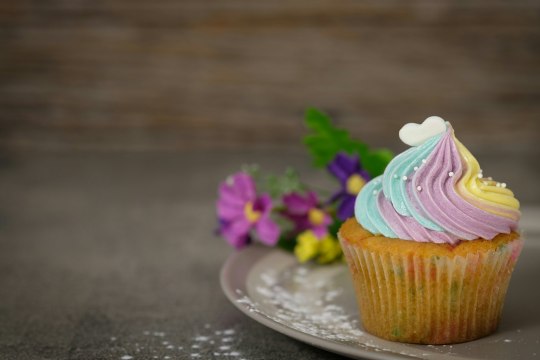
Cupcakes were invented in 1796 by Amelia Simmons, who developed a recipe that described the treat as “a light cake to bake in small cups” in the book American Cookery. The first recorded use of the term “cupcake” can be traced back to a cookbook from Eliza Leslie published in 1928. Before the widespread use of “cupcake,” the desserts were alternatively referred to as number cakes, or 1234 cakes, because the basic recipe called for one cup of butter, two cups of sugar, three cups of flour, and four eggs, along with a cup of milk and spoonful of baking soda.
Cupcakes grew in popularity during the early 20th century, particularly after 1919, when the Hostess company began mass producing a variety of cupcakes and similar dessert food products, sometimes called snack cakes. Over the years, Hostess introduced numerous cupcake options, including orange-flavored and chocolate cupcakes.
There have been various surges in the popularity of cupcakes over time and trends within the dessert marketplace. Local New York City shops such as Magnolia Bakery gained national attention after being featured in episodes of Sex and the City in the early 2000s. Sprinkles Cupcakes opened in 2005 as the first bakery dedicated solely to cupcakes. The store has opened a second location and now produces upwards of 25,000 cupcakes each day. Crumbs, also in New York City, has reported over $23 million annual cupcake revenue.
The earliest examples of cupcakes were simple in design. Hostess mass-produced cupcakes for over a year before introducing frosting as a staple ingredient. Chocolate and vanilla frosting were standard cupcake toppings for many decades, but newer varieties include red velvet, coffee, pumpkin spice, and lemon, to name only a few.
While cupcakes have a long history in the United States, the popularity of the dessert option has hardly plateaued. Cupcake consumption throughout the US increased by 52 percent between 2010 and 2011. In 2015, 14 percent of respondents to a national survey named cupcakes their favorite dessert, just 5 percent behind cake. Less than 10 percent of respondents said they did not like cupcakes. In recent years, Americans have consumed more than 770 million cupcakes yearly.
Cupcakes are so beloved in America that they have their holiday. National Cupcake Day is observed by baking enthusiasts in the United States and a few other countries around the world on December 15. There are even sub-holidays for the dessert, such as National Chocolate Cupcake Day on October 18.
The largest cupcake ever baked belonged to GourmetGiftBaskets.com. They set the World Record in 2009 with a 1,224-pound cupcake that measured 4 feet tall and 10 feet wide. The giant cupcake contained 2 million calories. Indeed, while cupcakes are a popular tasty treat in America, it is important to remember they are a dessert item and should be consumed sparingly.
A standard cupcake provides little to no nutritional value. Unless a person is living with a specific medical condition, accepting a cupcake at a birthday party or after dinner is fine, but limiting the dessert to a single serving is best. Individuals planning a dinner or party can look for healthier cupcake recipes or mini-cupcakes.
2 notes
·
View notes
Text
Innovations in Sauce Manufacturing: Meeting Consumer Demands for Variety
When compared to the old recipes that were handed down from one generation to the next, sauce manufacturing has come a long way. Consumers have an insatiable desire for a wide variety of flavours and options to choose from in order to spice up their meals in today's fast-paced and diverse culinary world. As a direct consequence of this, manufacturers of sauces have been in the vanguard of innovation, employing cutting-edge technologies and novel approaches in order to satisfy consumers' insatiable appetite for variety.
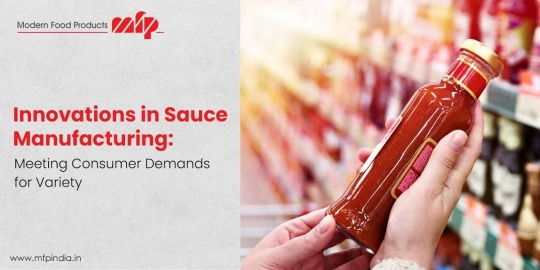
In today's post, we will discuss some of the fascinating developments in sauce production that have made it possible for manufacturers to meet the ever-changing preferences of contemporary customers. Satisfy your cravings with the best condiments and sauces in Vadodara. Shop mouthwatering food products from Modern Food Products – an excellent food product industry in Vadodara!
Flavour Fusion: The Art of Blending
The fusion of flavours is one of the most important developments in the sauce production industry. Using this method, you will create one-of-a-kind and mouthwatering combinations by combining a number of different flavours and components. In order to obtain the ideal harmony of flavour and scent, manufacturers do trials using a wide variety of herbs, spices, fruits, and vegetables, combining them in carefully calculated quantities. The combination of flavours enables manufacturers to create sauces that are tailored to specific gastronomic preferences, such as smoky and savoury barbecue sauces or zesty and acidic marinades, for example.
Natural and Organic Ingredients:
As customers become more health concerned and ecologically aware, there has been an increasing demand for natural and organic items, including sauces. This desire has led to the production of natural and organic sauces. Innovative makers of sauces have reacted to this trend by eliminating artificial additives and preservatives and replacing them with natural, organic ingredients of the highest quality. This method not only improves the taste of the sauces and the nutritional content of the ingredients, but it is also in line with the tastes of environmentally concerned customers who look for products that are sustainably and ethically sourced.
Customization and Personalization:
Personalization has emerged as a preeminent trend throughout many different businesses in this day and age, and the production of sauces is not an exception to this rule. Innovative producers are increasingly offering customisation options that give customers the ability to modify the taste, level of heat, and components of their sauces to their own preferences. Customers are able to build their own sauces through the use of online platforms and interactive apps, which makes the overall purchasing experience more interesting and gratifying.
Low-Sodium and Health – Focused Sauces:
As consumers' awareness of the importance of maintaining a healthy lifestyle continues to grow, a growing number of them are searching for low-sodium and health-oriented sauce alternatives. In response to this demand, manufacturers of sauces have been developing new low-sodium formulations that preserve the flavour profile while encouraging healthier consumption. These formulations have been a source of innovation. In addition, in order to make sauces that cater to the dietary requirements of those who are concerned about their health, they are investigating several natural alternatives to sweeteners as well as components that are low in calories. Indulge in the goodness of the best quality sauces in India. Buy high-quality food products from Modern Food Products – a renowned food product company in India for a gastronomic journey!
Global Flavour Exploration:
Consumers' preferences in terms of food have moved much beyond the cuisines of their home countries as the world has become more linked. Innovative sauce makers are jumping on board with the trend of experimenting with flavours from all over the world by releasing sauces that are based on a variety of different national cuisines. Consumers are now able to embark on a gastronomic journey without leaving the convenience of their own kitchens thanks to the wide variety of sauces and salsas available to them. These sauces range from smoky and pungent Mexican salsas to tangy and spicy Thai chilli sauces and rich and aromatic Indian curry sauces.
Sustainable Packaging Solutions:
When it comes to making sauce, innovation is not limited to the product itself; rather, it extends to the packaging as well. Innovative companies that make sauces are switching to more environmentally friendly packing methods to lessen the damage they bring to the environment. These environmentally friendly options, which range from biodegradable pouches to recyclable glass bottles, are resonating with environmentally concerned consumers who are eager to reduce their use of plastic and support sustainable practices.
Incorporating Superfoods and Functional Ingredients:
The desire for consumers to have access to more nutritious food options has prompted manufacturers of sauces to include superfoods and other functional ingredients in their products. Ingredients like turmeric, ginger, and goji berries, which are well-known for their many beneficial effects on health, are increasingly being included in sauces to improve both the flavour and the nutritional content of the dish. Consumers who are health conscious and looking for functional meals that help to their general well-being are likely to be interested in these sauces that contain superfoods.
Final Thoughts:
The improvement of taste and flavour is only one aspect of innovation in the production of sauce; other aspects include satisfying customer expectations for diversity, options that are mindful of health, and goods that are environmentally responsible. As the culinary scene continues to evolve, inventive sauce makers play a critical role in meeting the ever-changing preferences of modern customers. This position is especially important given the rapid pace at which consumer preferences are shifting. These firms are propelling the market forward and ensuring that sauce lovers all around the world have an abundance of delightful options to enhance their dining experiences by adopting new technology, experimenting with flavours, and focusing on sustainability and health. Get the quality you can trust and taste you'll love from Modern Food Products – a trusted food product company in Gujarat!
#Food Processing Companies in Gujarat#Food Processing Industry in Vadodara#Food Product Industry in Vadodara#Food Product Company in India#Food Product Company in Gujarat
6 notes
·
View notes
Text
Embracing Nature's Remedies: The Rise of Ayurvedic Products for Holistic Wellness
The latest trend in society is that everyone wants to live healthy lives without resorting to chemicals and inorganic products. This is true of one of the oldest surviving global health science systems – Ayurveda. Born from the rich tradition of Indian civilization, ayurveda has become a modern universal system to provide the human kind solutions that help bring mind, body and soul into harmony. Right at the center of all these is the creation of Ayurvedic products, which are considered as fundamental in the practice of an overall healthy lifestyle.
The increased interest in the natural products in India has made the ayurvedic products manufacturers in India as major stockholders of world health and nutritions. Their capability to integrate time tested knowledge of the ancients with today’s hi-tech world to make Ayurvedic products affordable while at the same time ensuring that they are Ayurvedic in their real meaning. The Essence of Ayurveda Ayurveda is, in fact, known as the ‘science of life’ which has been practiced from the antiquity period; about five thousand years ago in India. Its primary principle is about maintaining the three doshas, which are Vata, Pitta, and Kapha ones that regulate human’s health.
Products designed according to ayurveda are made from natural ingredients such as herbal extracts, minerals and others that help bring solutions to any particular health problems and equally maintain proper health of the body.
The products have garnered much support as people look for natural, efficient, non-synthetic products. It demonstrates the extent to which ayurvedic products manufacturers in India continue to increase their contribution to growth while creating standards for quality and innovativeness in the market. Why There Is Growth Of Ayurvedic Products Natural Ingredients: Customers in developed countries only want products that have been processed using organic and chemical ingredients. Natural herb and mineral based formulations of Ayurveda specifically answer this requirement.
Minimal Side Effects: It is very important to note that the majority of Ayurvedic products do not harm one's body the way synthetic drugs and cosmetics harm their user’s bodies since they are friendly to the body systems.
Holistic Benefits: Ayurvedic treatments do not work based on the symptoms of the ailments but rather focus on eradicating the cause of the medical issue hence prospect of permanency.
Sustainability: Ayurveda also practices the policy of non-interference with nature and nearly all manufacturers use environmentally friendly production methods. This is a referendum to the green or conservation conscious clientèle.
More and more customers gravitate towards Ayurveda therefore becoming a conscious choice for almost everyone by seeing how wellness companies such as Ayubal Wellness entail such methods into the contemporary sustainable world. Classification of Popular Ayurvedic Products Currently, the Ayurvedic product market has expanded in a way that it offers products for multiple health concerns. Some popular categories include:
Skincare and Beauty: Some of the naturally beautiful products include facial packs, skin creams for wrinkle removal and treatments for acne, using herbs such as turmeric, neem, and sandalwood.
Immunity Boosters: People often look for Chyawanprash, Herbal teas like Tulsi, Ashwagandha Ginseng, and a number of other supplements that are popular for boosting up the immune system.
Stress Relief: Products containing these herbs are gradually employed for overcoming stress and for improving the mental focus.
These diverse ayurvedic product offerings have been developed by ayurvedic products manufacturers in India which play a decisive role in fulfilling the increasing global demand for wholesome solutions for health.
Indian Manufacturers: Their Position in Ayurvedic Products In fact, the Indian continent is known in the whole world as the place original of Ayurveda. The country’s biodiversity and vast Ayurveda base has made the country a manufacturing hub of Ayurvedic products. Today, the ayurvedic products manufacturing industries in India are blending traditional knowledge with advanced technology in order to tap domestic as well as the international market sufficiently.
Most of these manufacturers have been shaped by some creativity which they used in working under the core values of Ayurvedic manufacturing. That way they are able to develop new products and keep the traditional Ayurvedic products relevant to the general consumer market. Such businesses as Ayubal Wellness are also participating actively in this process, presenting the population with qualitative products based on the principles of Ayurveda. The Global Demand of Ayurved Products The world has later adopted the use of Ayurvedic products as they are effective with the added bonus that they contain no artificial chemicals. Factors driving this global appeal include:
Increased Awareness: Increased concern for their own health and wellbeing has seen more and more people turn to Ayurveda for the correct treatment of their illnesses.
Health Trends: Growth in the use of natural and organic products has created curiosity towards Ayurvedic remedies that fall under the clean beauty and clean eating categories.
Scientific Backing: Latest research has also been conducted on effectiveness of Ayurvedic components, which has boosted the confidence of the consumers.
Accessibility: The ayurvedic products manufacturers in India have intensified their efforts towards making them readily available in the market by improving on the production and distribution channels. The Future of Ayurvedic Products For Ayurvedic products, the future of the global health system market is skyrocketing as Ayurvedic products are set for record growth on the faring market. Some trends that indicate a bright future for Ayurveda include:
Personalized Wellness: Using the advances of today’s world, producers create a unique Ayurvedic remedy for every person.
Innovation: Rapid progress in Ayurvedic research and production is providing the knowledge how to produce more effective and successful Ayurvedic medications.
Sustainability Initiatives: As governments and organizations worldwide give a nod to environment-friendly production, manufacturers Fox &,' are implementing sustainable strategies that appeal to consumers.
Regulatory Standards: More importantly, such quality standards help in creating a quality check that ensures that Ayurvedic products manufactured are safe and are effective as per the international standards. Conclusion The growing interest in Ayurvedic products is due to the fact that people all over the world are turning to natural systems of medicine. Using natural forces and following the tried and tested methods, these products provide optimized solutions that are practical and can be implemented for a long time.
In this transformation ayurvedic products manufacturers in India have their unique major part to play by not only diversifying and adding modern ideas and dimensions to Ayurveda.
Looking forward to the future Ayurveda can be viewed as the stable and strongly developed center of the health and wellness industry about which many generations can dream. In this changing scenario, Ayubal Wellness are also carrying forward the teachings of Ayurveda, though in a more subdued manner.
0 notes
Text
Edible Mushrooms Market
Edible Mushrooms Market Size, Share, Trends: Monterey Mushrooms, Inc. Lead
Functional Mushrooms Gain Traction as Consumers Seek Natural Health Solutions
Market Overview:
The global edible mushrooms market is projected to grow at a CAGR of 7.8% from 2024 to 2031, reaching a value of USD 85.7 billion by 2031. Asia-Pacific dominates the market, accounting for 45% of the global share. Key metrics include rising health consciousness, increasing vegan population, and growing demand for meat substitutes.
The edible mushroom industry is quickly developing as more people become aware of their nutritional value and flexibility in a wide range of cuisines around the world. With the rise of plant-based diets and the food industry's emphasis on sustainable ingredients, mushrooms have become a popular choice for both consumers and food manufacturers.
DOWNLOAD FREE SAMPLE
Market Trends:
Customers seeking natural health cures are driving a significant shift in the edible mushroom industry towards functional variations. Reishi, cordyceps, and lion's mane are gaining popularity due to their potential immune-boosting and cognitive-enhancing properties. According to recent data from the American Mushroom Institute, functional mushroom sales have climbed by 20% year over year. This trend is being driven by a growing interest in adaptogens and nutraceuticals, with mushroom-based supplements increasing 35% in the previous year. Major food and beverage companies are capitalising on this trend, with Nestlé recently launching a line of mushroom-infused coffee products aimed at health-conscious consumers.
Market Segmentation:
The button mushroom industry continues to dominate the edible mushroom market due to its vast popularity and versatility in a number of cuisines. According to the International Society for Mushroom Science, global button mushroom production will reach XX million tonnes in 2023, a 5% increase from the previous year. This increase is attributed to the mushroom's mild flavour, ease of cultivation, and excellent nutritional value.
In recent years, large growers have invested in innovative agricultural practices to increase output and quality. For example, Monaghan Mushrooms, one of Europe's largest mushroom producers, put AI-powered climate control systems on its farms, resulting in a 15% increase in production efficiency. This technical advancement increased output while enhancing the consistency and quality of button mushrooms.
Market Key Players:
Monterey Mushrooms, Inc.
Monaghan Mushrooms
Greenyard
Bonduelle Group
Costa Group
Phillips Mushroom Farms
Contact Us:
Name: Hari Krishna
Email us: [email protected]
Website: https://aurorawaveintellects.com/
0 notes
Text
Formally known as Jake's Wayback Burgers, the chain was launched in 1991 in Delaware. Additional locations were opened, until the beginning of franchising started in 2000. By 2013 the chain began an international expansion into 28 other countries. By 2016 the chain counted 95 locations in the US, with international outlets bringing the total upto 133 stores. The chain stands out amongst other similar offerings with some of its weird and even controversial offerings. Bug Powder Milk Shakes In 2015 the chain offered 'protein milkshakes' made using powder derived from crickets. Not as strange an idea as it sounds at first glance, many nutritional experts claim that insects are not only high in protein, but could provide the answer to feeding the world's population in the future. Their Oreo Mud Pie milkshake contained 24 grams of protein from the blended cricket. The Royal Silencer Everyone has an opinion about Prince Harry, you know the one, James Hewitts boy. I haven't read his biography, but the excerpts I have seen, he seems rather bitter and sad. Wayback burgers brought a special out to commemorate the release of his book, you know, Heir and the Spare. They sold their usual two patty burger, with an additional 'spare' burger added, and remarked that the Royal Family could do worse than sit down with a burger and bury the hatchett. Thee Mustang Burger This one is a doozy. I have wrote before about the time a company had to stop selling its 1/3 pound burger, because people thought it was smaller than a 1/4 pounder because obviously 3 is a smaller number than 4. This time they held a competition for their customers to get the naming rights to a burger special. This time the gentleman who won drove a Mustang car, so he called the burger a Mustang burger. All good right? Well not exactly. Seems that any burger called Mustang, had to be made from wild mustang horses. Right, it is so obvious. It led to calls for boycotts of the Wayback stores till they mended their evil horse selling ways. Ultimately it led to the chain withdrawing the name and issuing an apology on Facebook. The Triple Triple Challange Their next entry in the Wayback hall of fame, was a special one day challenge. Whoever could eat their triple triple burger the fastest would win the prize pot of $3,300. Just look at it, one commentator wondered if it was possibly a secret plan to curb world population growth. Kim Kardashian Free Burgers They offered the celeb free burgers and milk shakes for the duration of her pregnancy. I don't know if she actually took them up on this, but hey, the offer was there. Read the full article
0 notes
Text
Reliable Quantum Health Analyser 4G Manufacturer in Jaipur for Bulk Wholesale Needs
Introduction
In today's advanced world, where health monitoring is concerned, Quantum Health Analyser 4G is the technological marvel. Designed with the aim of bringing about fast health screenings and quick health analyses, this future technology is taking enormous strides to become a staple of today's healthcare professionals, wellness centers, and diagnostic labs. Looking for a reliable quantum health analyser 4g manufacturer in Jaipur for buying in bulk? Well, you have reached the correct page. With years of experience and expertise, Akshay Enterprises is an industry leader providing high-quality Quantum Health Analyser 4G devices to wholesale buyers throughout India.
What is a Quantum Health Analyser 4G?
This is the Quantum Health Analyser 4G, a modern diagnostic tool that applies quantum physics and bio-resonance technology to analyze the health of an individual. It provides in-depth information regarding organ functioning, nutritional deficiency, and dangers to health by studying the energy fields of the human body. The portability and non-invasive nature of the operation of this equipment make it highly useful for health practitioners and wellness professionals.
Features of the Quantum Health Analyser 4G
Advanced Bio-Resonance Technology: The device identifies imbalance conditions in the body through minor changes in energy.
Comprehensive Reports: Over 40 health parameters reports within a few minutes.
User-Friendly Interface: It has an extremely friendly user interface, very easy to operate even with a little knowledge of it.
Portability: It is extremely portable and so light to carry that it is relatively easy to use anywhere.
Customizable Settings: They have custom settings for various healthcare requirements.
Benefits of Using the Quantum Health Analyser 4G
Early Detection: Gains all the potential health diseases even before it creates a major problem.
Time-Saving: Scans within short times, it is much less in relation to other diagnostic processes.
Cost-Effective: It minimizes the number of lab tests, which are extremely costlier.
Non-Invasive: Suitable for all age groups and does not cause irritation at all.
Environmentally Friendly: Reduces the use of disposable medical products.
Why Choose Akshay Enterprises for Quantum Health Analyser 4G?
Trusted Manufacturer in Jaipur
Akshay Enterprises is a company based out of the city of Jaipur. This organization has acquired a good reputation as a quality quantum health analyser 4g manufacturer in Jaipur. It takes immense pride in serving quality services to its customers.
Wholesale Supply for B2B Clients
We know what B2B partners need and offer scope for wholesale supply. We make distributorship, retailership, and corporate buying hassle-free and flexible with scalable solutions.
Quality Assurance
Each Quantum Health Analyser 4G manufactured by us gets quality checked and every such production is tested effectively in terms of durability and performance. That's the reason we are the number one choice of all healthcare professionals.
Competitive Pricing
Our pricing is value-based without compromising the quality. Buying directly from Akshay Enterprises saves you all the costs associated with middlemen, thus making our products within your reach for more numbers.
Exceptional Customer Support
We ensure customer satisfaction by having extensive after-sales support, which includes training, troubleshooting, and technical assistance for all our Quantum Health Analyser 4G devices.
Applications of Quantum Health Analyser 4G
Hospitals and Clinics: It assists health care providers in making effective patient assessments.
Wellness Centers: Suitable for holistic health services promotion.
Fitness Studios: Provides body composition and nutritional needs information.
Corporate Wellness Programs: Helps in the identification of employee health risks.
Personal Use: Portable to bring health care into the comfort of your home.
How to Place a Bulk Order
Ordering at Akshay Enterprises is pretty straightforward:
Contact Us: You simply need to connect with us through our website or customer care.
Specify Requirements: Provide the quantity you would want to have and any customization requirement for your order.
Receive a Quote: Competitive quote customized on your needs.
Order Processing: Confirmed orders processed and delivered promptly.
Conclusion
With Akshay Enterprises, there are names of trust for all those businesses that want to have a reliable quantum health analyser 4g manufacturer in Jaipur, which would give them the highest standards and excellence in their respective business by offering them the best of manufacturing, superior quality, and keen customer satisfaction. For all your wholesale needs or bespoke requirements, look to us to boost your business offerings.
Discover how our Quantum Health Analyser 4G devices will alter the face of health monitoring in the future. Dial Akshay Enterprises now to step into tomorrow's innovation in healthcare solutions.
0 notes
Text
Entry 2
Companies and Brands That Own the Product
The chocolate industry is dominated by major companies such as Nestlé, Mars, Hershey, and Ferrero. These brands produce popular products like KitKat, Snickers, Reese’s, and Ferrero Rocher, which are staples in households worldwide. Despite their immense profits, these companies have long been criticized for their lack of transparency and accountability regarding their supply chains and their connection to child labor.
Production and Consumption in America
The United States is one of the largest consumers of chocolate, accounting for over $22 billion in annual chocolate sales. Globally, more than 4 million metric tons of cocoa are produced annually, with the majority coming from West Africa—specifically Côte d’Ivoire and Ghana. These two countries supply about 60% of the world’s cocoa, much of which is used to meet America’s high demand for chocolate products.
The Form of Modern Slavery Linked to the Product
The production of cocoa, the primary ingredient in chocolate, is heavily reliant on forced child labor in West Africa. Children as young as five are trafficked or coerced into working on cocoa plantations. These children endure hazardous conditions, working long hours with sharp tools and exposure to harmful chemicals. Many are denied education and adequate nutrition and are forced to work without pay, trapped in a cycle of exploitation.
The Supply Chain and Where Slavery Enters
The chocolate supply chain begins on cocoa plantations in West Africa, where children are forced to harvest cocoa pods. These pods are sold to local traders, who transport them to exporters. The cocoa is then purchased by large processing companies that refine it into cocoa butter and powder, which are sold to chocolate manufacturers. Forced labor enters the supply chain at the earliest stage—on the plantations—making it difficult for companies to claim ignorance about its existence.
Projections of Enslaved People Producing the Product
It is estimated that over 1.5 million children are engaged in hazardous labor in the cocoa industry, primarily in Côte d’Ivoire and Ghana. While not all of these children are considered enslaved, many are forced or trafficked into labor. Despite initiatives to eliminate child labor, reports indicate that the number of children involved in cocoa production has remained alarmingly high, raising questions about the effectiveness of corporate and government efforts to combat the issue.
0 notes
Text
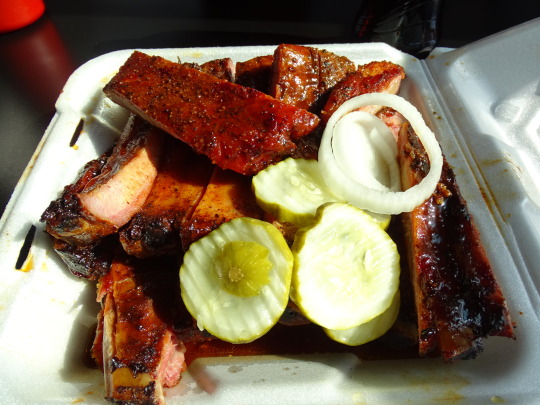
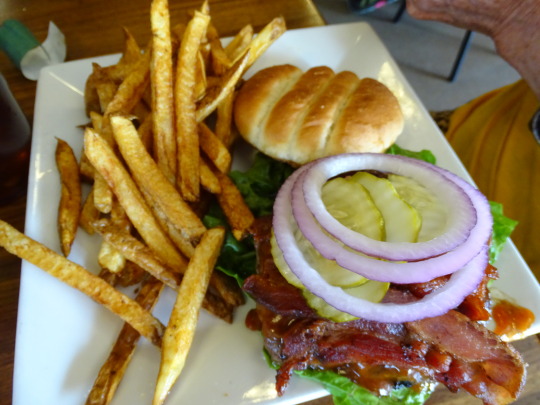
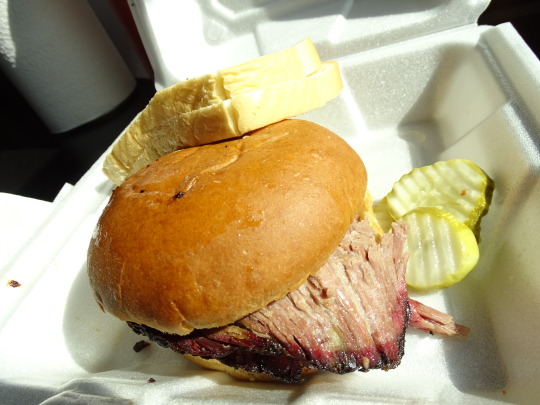
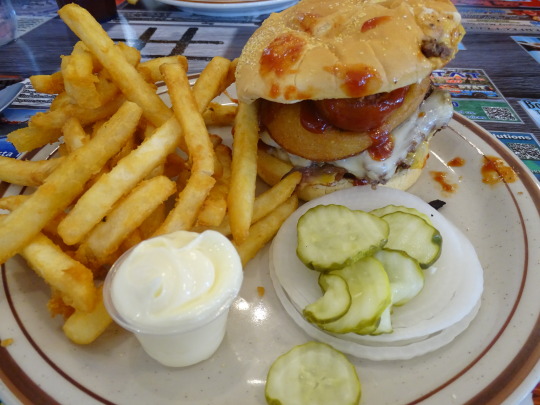
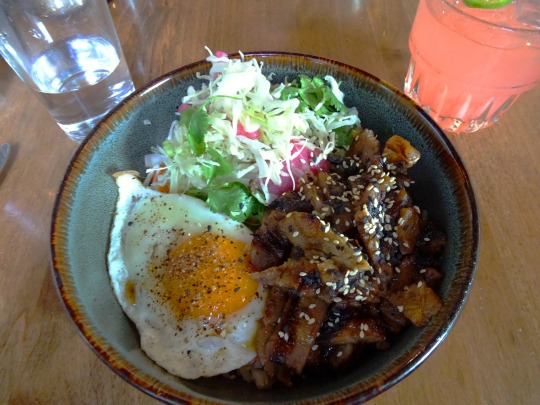
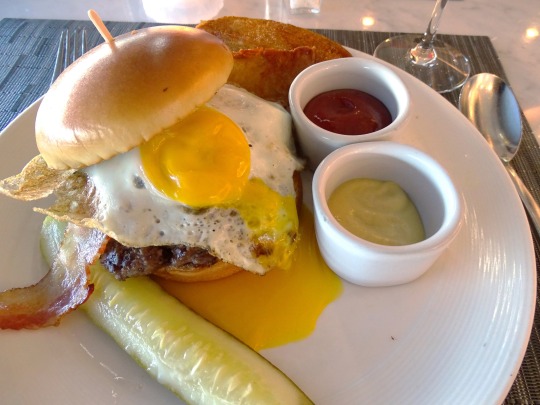
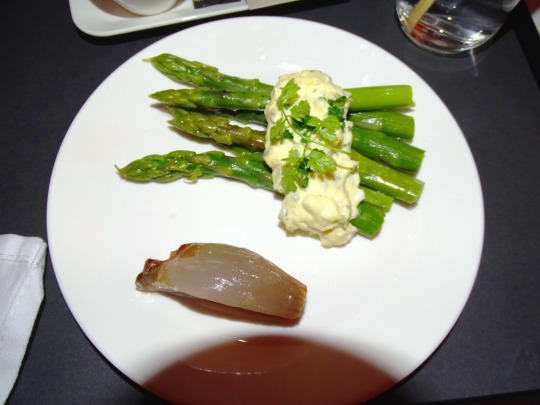
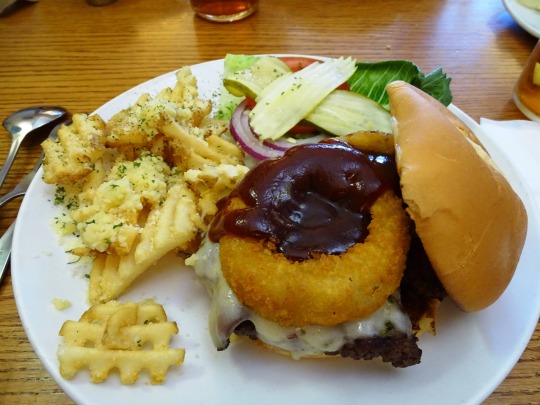
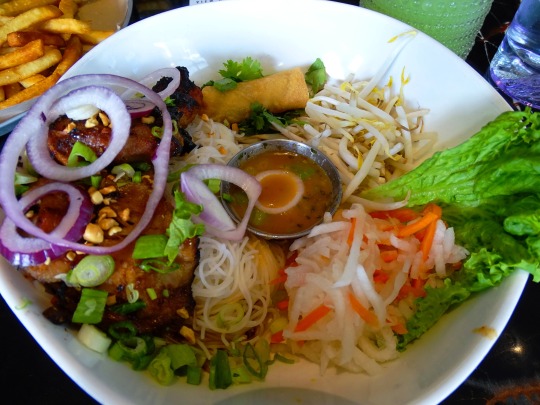
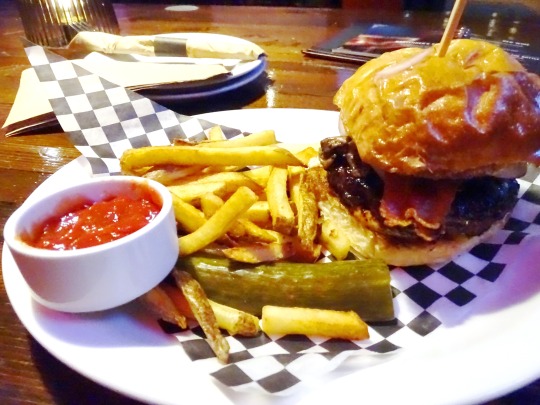
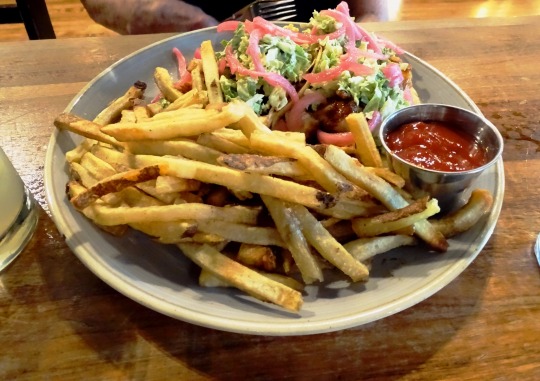
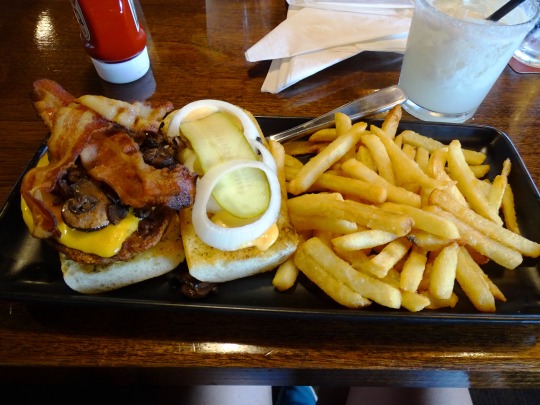
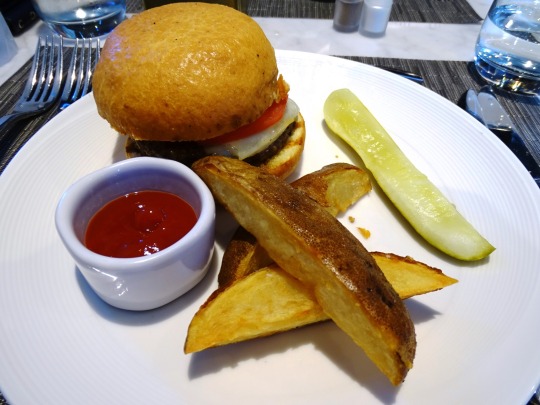
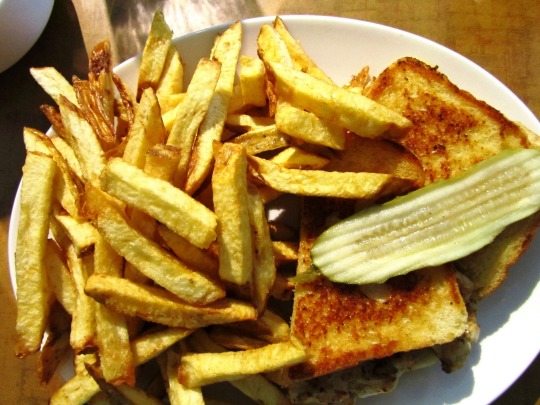
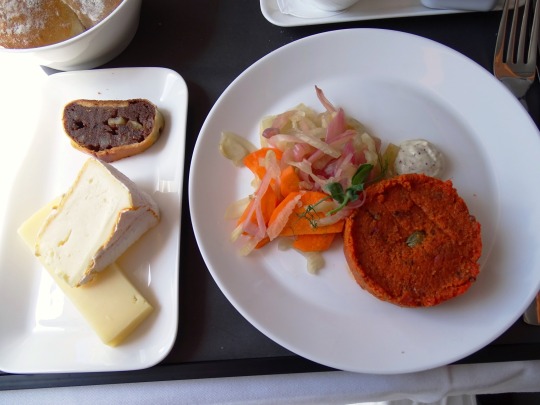
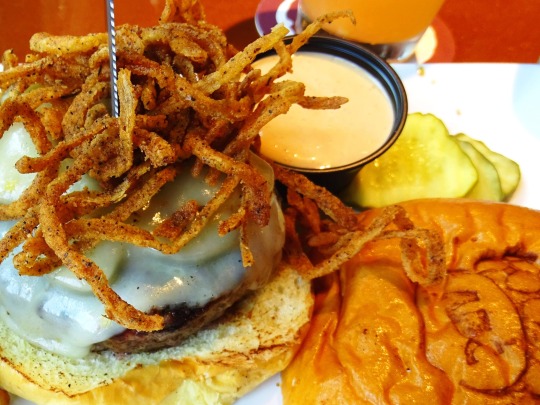
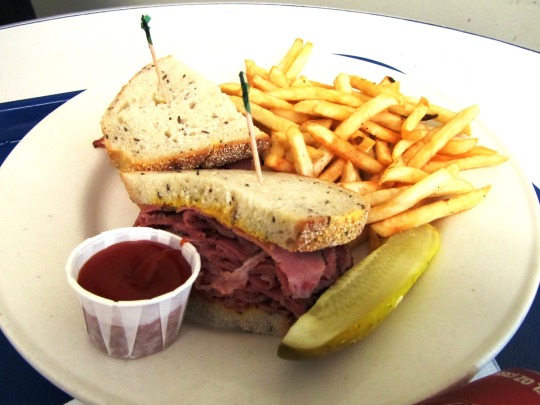
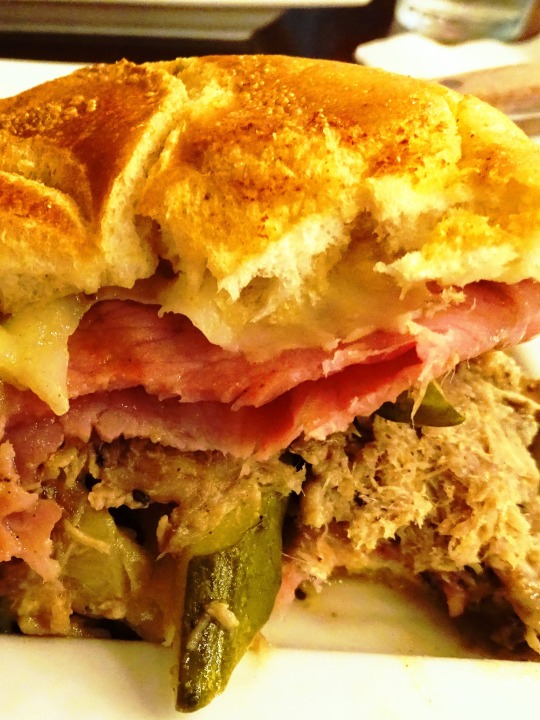
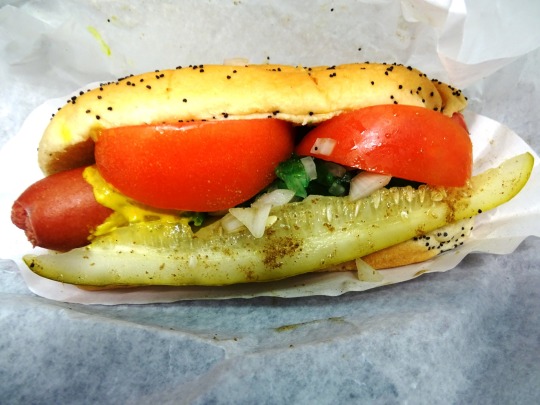
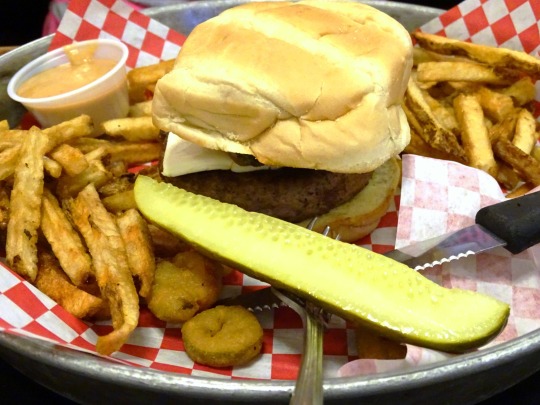

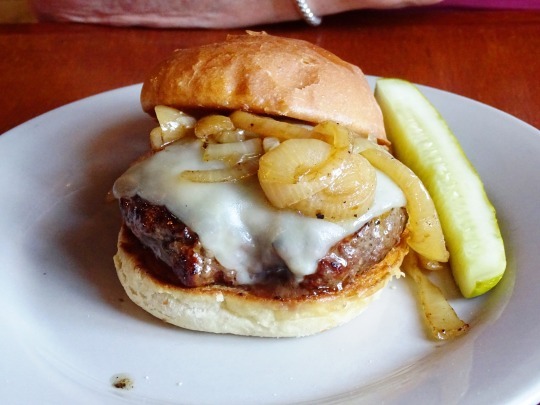
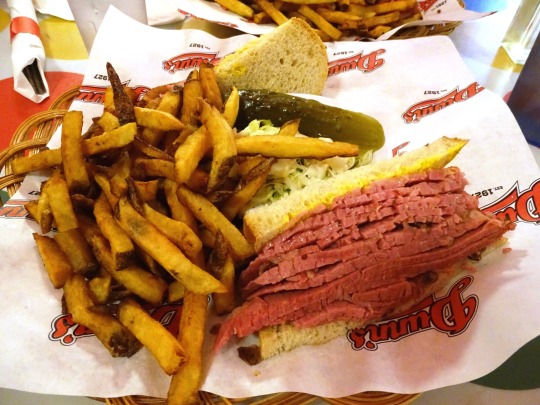
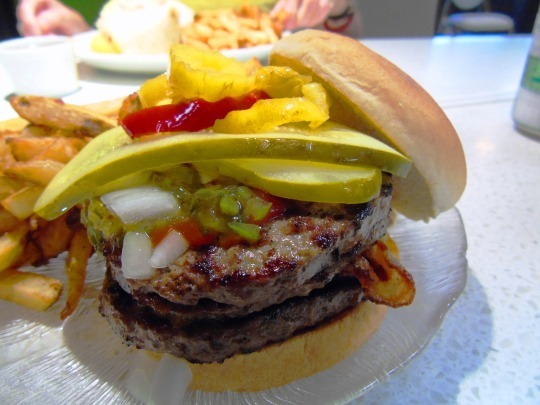
National Pickle Day
National Pickle Day is on November 14 and it was created to celebrate the pickle as one of the worlds favorite fermented foods. Pickles prove to be preposterously popular with people across the country; the number of pickle-eaters is projected to proliferate to more than 250 million by 2023. That gives plenty of pretext to position November 14th as prime pickle time!
History of National Pickle Day
The practice of pickling has existed for thousands of years. The process ensured a degree of preservation otherwise impossible in pre-modern conditions and was essential in providing a mobile supply of provisions for travelers as well as a dependable source of nutrition for those living through barren winters. While a diverse set of foods can be pickled, the cucumber emerges as the dominant food that most associate with the idea of both pickling and the word “pickle” itself. Archaeologists believe that the first evidence of pickled cucumbers originates from Tigris river valley civilizations, and the nutritional benefits of the food would go on to be lauded by such historical figures as Cleopatra and Julius Caesar.
With all their popularity in the Old World, pickles would not make their appearance in North America until 1492. As you may have guessed by the year, the one responsible for their introduction was none other than Christopher Columbus. Pickles were included in sailors’ rations on his expeditions as a means by which to prevent the onset of scurvy. By the mid-17th century, cucumbers bought from Dutch settlers farming in the New York area were pickled and distributed throughout the region. This would lay the foundations for the territory to be the perfect site for the introduction of the kosher dill pickle.
In the period of the late 1800’s and early 1900’s, a large number of Eastern European Jews immigrated to the United States and settled in the New York City area. They brought with them the unique methods that produce kosher dill pickles, and these early iterations of pickles would develop into the now-famous and ever-familiar food available in grocery stores throughout the United States.
National Pickle Day timeline
2030 B.C.
A Pickle Provenance
Mesopotamians pickle cucumbers native to India and give birth to one of the great staples of food condiments.
10th Century
A Pickle Pairing
Dill, a central ingredient in many brine mixtures used to culture cucumbers, arrives in Western Europe from Sumatra.
1940’s
A Pickle Portion
The United States government produces 40% of U.S. pickle output as they include pickles in rations for the armed forces.
2001
A Pickle Party
The first annual National Pickle Day celebrations take place in New York City.
Fun Stats About Pickles
A pickle in every home
More than 67% of all households eat pickles. American households in particular purchase pickles every 53 days!
America’s pickled angel
Americans consume more than 9 pounds of pickles per person annually. To give context, the average cucumber weighs about 0.8 pounds.
A whole lotta acres
100,000 to 125,000 American acres are specifically devoted to growing pickling cucumbers and they’re grown in more than 30 states.
National Pickle Day FAQs
Is there a national pickle shortage?
Without raising too much alarm, there is a strain of mildew that has been particularly harmful to cucumber crops in the United States. However, researchers are working to develop a variety of mildew-resistant cucumbers, which would secure the future of the pre-pickle plant.
What is the pickle capital of the world?
It’s up for debate! St. Charles, Illinois, the original home of the pickle-centric marketing company Pickle Packers International, held the title for more than four decades. However, the organization has since relocated to Washington, D.C., leaving this particular question open.
What state makes the most pickles?
Michigan grows the most pickles.
National Pickle Day Activities
Break a Record: Got an appetite for pickles? Test your limits and see if you can break the world record for pickle consumption. The current holder of the throne gobbled up more than five-and-a-half pounds of pickles ... in six minutes. Good luck!
Envision Your Own Variety: Just because the technique has been around for thousands of years doesn’t mean that it’s been perfected… right? There are limitless possibilities as to how you can go about making pickles. Maybe it’s time for you to concoct your own formula and show the world what you (and your pickles) are made of!
Try 'Em All!: If you don’t want to stuff yourself silly with a peck of pickles, and you’re not inclined to brine your own cucumbers, consider sampling different kinds of pickles to discover which style is your favorite - from bread and butter, to sweet, to classic kosher dill, there are plenty of ways to enjoy this salty snack!
Why We Love National Pickle Day
Pickles Are Versatile: Although many choose to eat them on their own, pickles can be enjoyed fried, in a sandwich, in a dip, in a salad, among other ways.
Pickles Aid Athletes: Some may pucker at the idea of it, but drinking pickle juice can help athletes reduce the likelihood of experiencing cramps after intense exercise.
Pickles Have Probiotics: Pickles fermented in non-vinegar brine solutions carry with them probiotic microorganisms that provide a whole host of health benefits.
Source
#Brisket Burger#back ribs#Double Cheeseburger#Cuban Sandwich#Chicago Hot Dog#Bündner Fleisch Mille Feuiilles#Montreal Smoked Meat#Avocado Ranch Burger#USA#Sourdough Chicken Melt#Canada#food#restaurant#fries#Pastrami Sandwich#original photography#Swiss Cheese#real Swiss cheese is the best cheese#Hiltl Tartar#Lozärner Birewegge#National Pickle Day#14 November#NationalPickleDay
1 note
·
View note
Text
Lifestyle Diseases Apps Market Trends and Analysis: Comprehensive Overview of Market Size, Share, Growth
The global lifestyle diseases apps market size is expected to reach USD 13.77 billion by 2030, registering a CAGR of 15.2% from 2025 to 2030, according to a new report by Grand View Research, Inc. Factors such as growing awareness regarding the benefits of smart wearable devices and rising disposable incomes, specifically among middle-class consumers, are driving the market growth. Moreover, the rising adoption of smartphones worldwide is anticipated to increase the adoption of fitness applications among users of all income levels. For instance, according to Business of Apps, in China, around 1.07 billion people were actively using smartphones in 2023.
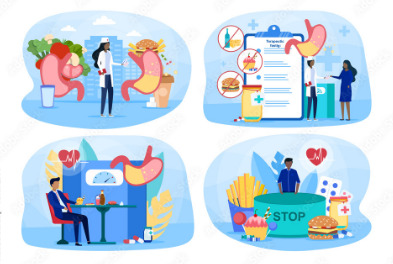
The rise of lifestyle diseases is expected to promote the use of mobile health apps for self-care and symptom management. For instance, according to the World Obesity Atlas 2023 report, a global study indicates that over half of the global population is expected to be overweight and obese within 12 years if treatment, prevention, and support don't improve. Furthermore, users' rising preference for long-term subscriptions to fitness mobile applications is one of the major factors expected to drive market growth.
Lifestyle Diseases Apps Market Report Highlights
Based on the platform, the Android segment dominated the lifestyle diseases apps market in terms of revenue share in 2024 owing to the affordability and convenience of the Android-based apps.
Based on device, the smartphone segment held the largest market share in 2024, based on devices, owing to technological advancements in the virtual fitness industry and the rise in smartphone adoption.
Based on indication, the obesity segment held the largest market share in 2024 due to the rising adoption of lifestyle apps to manage the sedentary nature of various work forms through the services provided by these apps.
North America dominated the global lifestyle diseases apps market due to the presence of a large number of major market players, favorable government initiatives, growing awareness of health and wellness, and the accessibility to various lifestyle disease apps
For More Details or Sample Copy please visit link @: Lifestyle Diseases Apps Market Report
Furthermore, people are shifting from conventional gyms and studios to virtual fitness. This has resulted in a rise in app downloads and subscriptions for lifestyle diseases. For instance, according to Dr. Muscle, in 2021, fitness-related apps were downloaded more than 400 million times. Thus, such a rise in the adoption of lifestyle development apps fuels market growth.
Some of the key players in the market are MyFitnessPal, Inc., Noom, Inc., Fitbit, Inc., Azumio, Inc., Lifesum AB, Sleep Cycle, Headspace Inc., VILEX, LLC, HealthifyMe Wellness Private Limited, and Nudge Coach, Inc. Players are adopting various key strategic initiatives to expand their business and market position. For instance, in September 2022, MyFitnessPal, Inc., in collaboration with the White House Conference on Hunger, Nutrition, and Health, announced a program to provide access to fitness and nutrition education, personalized health insights, and technology to help at-risk Americans nationwide to increase physical activity, eat healthier, and lower the impact of diet-related diseases.
List of major companies in the Lifestyle Diseases Apps Market
MyFitnessPal, Inc.
Noom, Inc.
Fitbit, Inc.
Azumio, Inc.
Lifesum AB
Sleep Cycle
Headspace Inc.
HealthifyMe Wellness Private Limited
Nudge Coach, Inc.
For Customized reports or Special Pricing please visit @: Lifestyle Diseases Apps Market Analysis Report
We have segmented the global lifestyle diseases apps market based on platform, device, indication and region.
#HealthTech#DigitalHealth#LifestyleDiseases#FitnessApps#WellnessTech#HealthApps#ChronicDiseaseManagement#MobileHealth#HealthcareInnovation#HealthyLiving#DiseasePrevention#HealthMonitoring#Telemedicine#MHealth#HealthAndWellness
0 notes